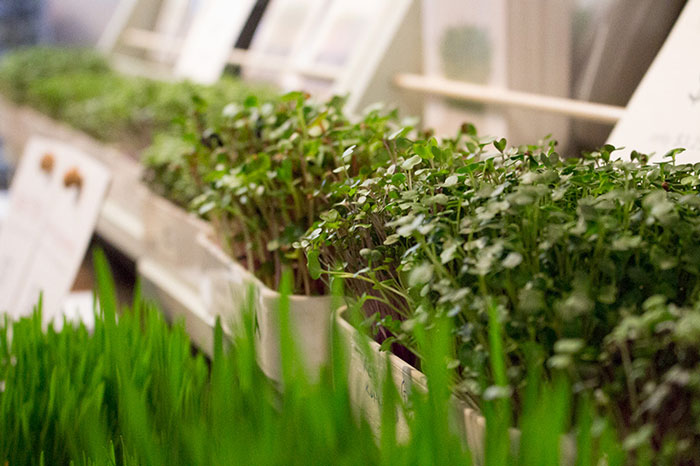An Island guide to growing on PEI
Don’t you just love looking out of your window and feeling the warmth and intensity of the March sun? You can close your eyes and imagine it’s July again. When you open your eyes and look outside, it may still look like winter but spring is closer than you think. Typically PEI has its last frost in late May or early June, so March becomes the perfect time to grow certain types of transplants and begin a new year of gardening.
Some seeds require 10-12 weeks to develop into a mature transplant so these should be planted in March to be ready for your garden in early June. Peppers, celery, leek, and many types of annual flowers are okay to be seeded now. Just take a look at the back of the seed package to find out the suggested time. Most common vegetables such as tomatoes, cabbage, or lettuce should be started later, in April.
The seed packages should also have some growing information, and there are also many online sources that provide expertise. For best results you should follow the directions given for the plant type as closely as possible. In order to nurture these tender seedlings choose a window that has full sunlight for at least 6 hours per day. If you do not have adequate sunlight, the stems will grow long and weak. You can supplement sunshine with a ‘grow light’, but make sure the bulb is a full-spectrum light. For most plants, it is also important to have a consistently warm temperature of at least 20 °C.
Gather the supplies you will need. The proper planting mix is key to a good start for your seeds. Generally, a soilless growing medium is recommended. New gardeners should use a pre-mixed soil as they have added nutrients and are sterile (harmful weeds or pathogens are not present). Your local garden centre is your best bet to find a good growing medium. As many seasonal garden centres are not yet open in March, you can try spots like VanKampens in Charlottetown, Kool Breeze Farms in Summerside, or Nabuurs Gardens in Brudenell for your seed starting needs.
Some plants are finicky about having their roots disturbed, so using peat pots or a biodegradable pot like those you can make from newspaper with the Paper Potter tool, can be great solutions for avoiding transplant shock when it’s time to get your plants outside. If you have saved plastic pots, they need to be cleaned and disinfected before reusing them.
The next step is to plant your seeds. It is important not to plant them too deep. A rule of thumb is to cover them with soil no deeper than twice the diameter of the seed. Water lightly, place the pots in the window and they should start to sprout in a week or two. As the seeds are germinating, ensure the soil remains moist but not too moist as this could damage the roots. It’s all about balance.
Early seeding gives the Island gardener a head start and helps to ensure that your plants will have the necessary time in the garden to mature in PEI’s short growing season. Unpredictability is a constant factor in gardening so I like to spread out my plantings, both indoors and directly in the garden outside, so not all plants are at the same stage of growth. This helps provide regular harvests and is a little bit of insurance in case the weather doesn’t cooperate. Do not be discouraged if mother nature conspires against you in producing transplants, as they can also be sourced at many local garden centres in June. Happy Gardening!
- THE EDIBLE GARDEN - June 2, 2020
- THE EDIBLE GARDEN - March 1, 2020
- THE EDIBLE GARDEN - February 1, 2020
- THE EDIBLE GARDEN - January 1, 2020
- THE EDIBLE GARDEN - December 2, 2019
- THE EDIBLE GARDEN - November 1, 2019
- THE EDIBLE GARDEN - October 1, 2019
- THE EDIBLE GARDEN - September 1, 2019
- THE EDIBLE GARDEN - August 1, 2019
- THE EDIBLE GARDEN - July 1, 2019


